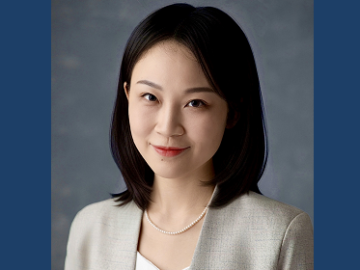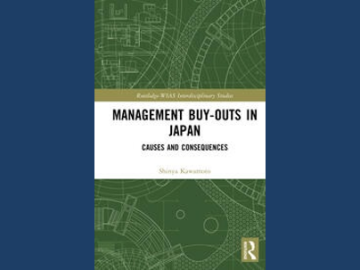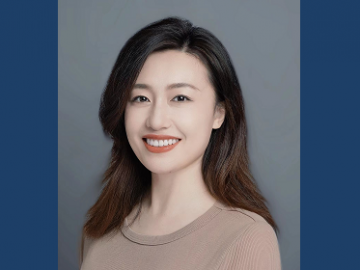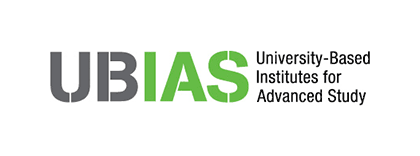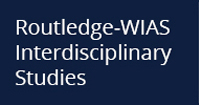Introduction of our activities
1. Research activities of Assistant Professor Amane Kasai
Waseda Culture and Arts Week, a festival for the dissemination of various culture and arts elements of Waseda University, was held from October 11 to 21, 2021. During the week, WIAS researcher, Assistant Professor Amane Kasai organized an event to introduce her research. The following is her report of the event.
Waseda Arts and Culture Week, a university-wide event held every fall, offered an opportunity for young WIAS researchers to introduce their research. I was in placed in charge of producing an event for 2021. I was asked to plan an event that would be easy to understand and enjoyable for students and the general public with no prior knowledge of the topic. As I am conducting research on musical experiences at hot spring resorts, I invited guest performers currently active at hot spring resorts and hosted a talk event featuring their demonstrations.
The guest performers were Mishiro Kurama, a member of Shojo Kageki (all-female revue), and Daigoro Tachibana, a member of Taishu Engeki (theater for the masses). Ms. Kurama, a former member of the OSK Nippon Revue Company, is currently the top male role actress in Setsugetsuka Kagekidan, a review company exclusive to Kagaya, a long-established inn in Wakura Hot Springs in Ishikawa Prefecture. Mr. Tachibana, the third leader of the Kikutaro Tachibana Theatre Troupe and president of the Kyushu Theatre Association, has a notably strong reputation as a female role actor. Shojo Kageki and Taishu Engeki are performing arts that have developed in hot spring resorts; their venues and performance forms are rather fixed, so these two performers seldom have an opportunity to perform together. This project, bringing together these two performers who are usually busy performing day and night on stage in different areas, was only possible because of the COVID-19 pandemic situation.
In the mini-lecture that preceded the talk, I spoke about the variety of performing arts that are presented at hot spring resorts, and explained why such performances tend to take a revue style combining a variety of short pieces, given the nature of the venues, and the fact that there are many first-time visitors and many passersby who just happen to be there to watch the performances. The two speakers in the talk event made it clear that the repertoires, stage mechanisms, and staging methods have many points in common that transcend the genres unique to hot spring resorts. The conversation with the two, about topics such as their life paths and routines as performers, and the stance and techniques involved in performing as the opposite sex, clarified the similarities and differences between genres that were previously not readily noticeable—all of which gave us useful qualitative data for my research project.
Ms. Kurama performed the revue version of Eikou no Kakehashi1 and Mr. Tachibana performed the female dance accompaniment to Kaze no Bon Koiuta.2 The live performances gave the audience a valuable opportunity to experience the characteristics of the performances mentioned in the talk, such as the selection of music familiar to the audience and compositions that keep the attention of the audience. I would like to continue stage events like this, that bridge the gap between different genres and performers, so as to contribute to my research on cross-genre music and performing arts, and reflect the results back to the entertainment field.
The event, held on October 12, 2021 at the Ono Auditorium on the Waseda campus, was open to the public with infection control measures in place. It was streamed online in real time to a total audience of 105 people (46 at the venue and 59 via streaming). The archived video, viewed over 1,500 times within a month of its release, is still available on the YouTube page of the Waseda Institute for Advanced Study.
https://www.youtube.com/watch?v=P94adtgObKw (with Japanese and English subtitles)
1 Eikou no Kakehashi (Bridge of Glory): a 2004 hit song of the popular Japanese pop duo Yuzu
2Kaze no Bon Koiuta (Love song at Kaze-no-Bon festival): a song by the famous Japanese enka singer Sayuri Ishikawa
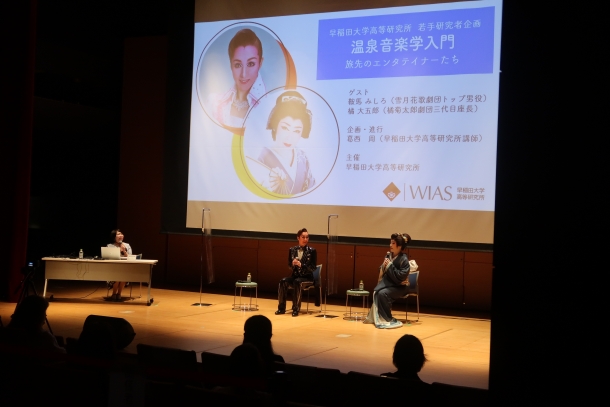
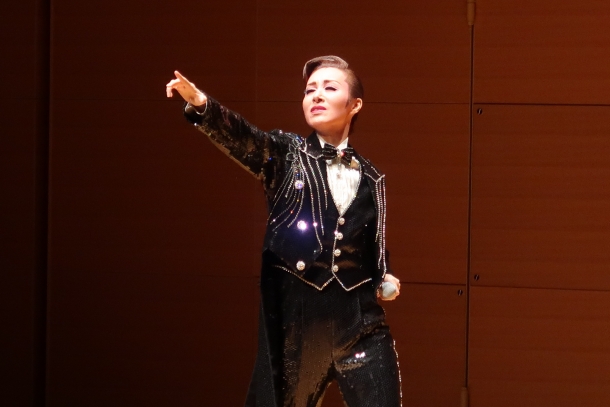
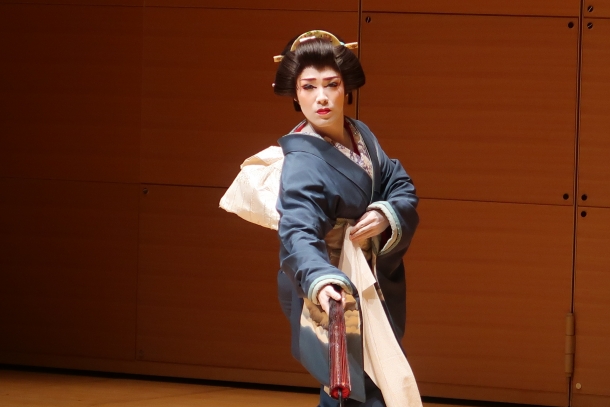
2. Research results of Associate Professor Takeshi Maruyama
The results of Associate Professor Takeshi Maruyama’s research on the mechanism of preventive carcinogenesis were published in Nature Immunology on October 25, 2021. The following is an introduction to his latest research.
Epithelial cells remove precancerous cells by cell competition via MHC class I–LILRB3 interaction by Associate Professor Takeshi Maruyama
Epithelial cells, the non-immune cells that make up the surface layers of the lungs, intestines, and other organs, have a function similar to immune surveillance, called “cell competition,” in which precancerous cells that are the seeds of cancer are eliminated. Associate Professor Maruyama reported that the actual surveillance system of epithelial cells is the immunological ligand (MHC-I1) − receptor (AltR) system, in which epithelial cells attack precancerous cells by recognizing their MHC-I (Fig. 1, lower left). Until now, the consensus was that immune cells attack aberrant cells, including transformed cells, via the MHC-I recognition, but it turns out that epithelial cells can also recognize MHC-I and attack transformed cells.
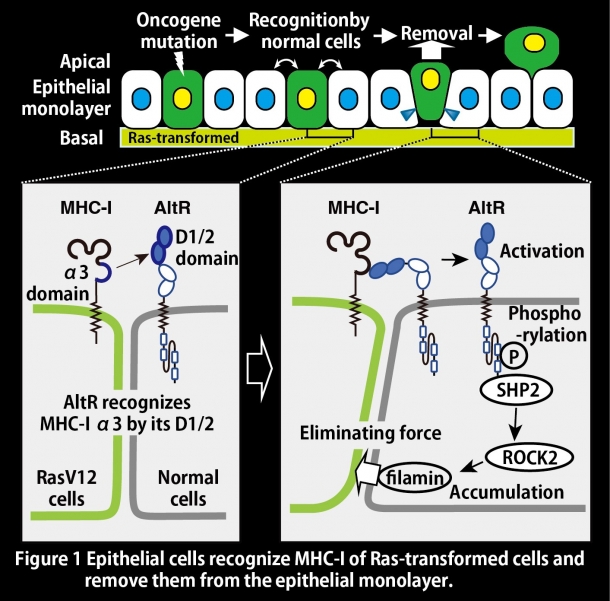
(1) What we know from previous studies (scientific and historical background)
In mammals, epithelial cells can attack cancer-mutated cells (precancerous cells) and eliminate them from the body; this is called cell competition. It has been shown that normal epithelial cells are primed (activated) by contact with precancerous cells and push them out of the epithelial cell layer by accumulating cytoskeletal factors toward the precancerous cells. However, it has been unclear how primed epithelial cells recognize precancerous cells, i.e. through what sort of ligand-receptor interactions.2
(2) Breakthrough findings of this research
In order to identify the primed epithelial cell receptors that recognize precancerous cells, Dr. Maruyama identified an immunoglobulin (Ig)-like domain-protein whose function is still unknown, and named it Canis suboptimal alteration recognizing protein (Canis AltR). This protein is upregulated (i.e. its responsiveness to a stimulus is increased) in normal cells primed by contact with precancerous cells (Fig. 1, lower left).
On the other hand, it has been reported that the expression of RasV12 protein3 in precancerous cells promotes the expression of MHC-I. Since the Ig-like domain is considered to be a domain that can bind to MHC-I, Dr. Maruyama hypothesized that the AltR of normal cells binds to the MHC-I of precancerous cells, i.e., epithelial cells recognize the MHC-I of precancerous cells by AltR.
In an in vitro cell competition model,4 AltR on normal epithelial cells is phosphorylated by MHC-I expressed on precancerous cells. Activated by phosphorylation, AltR accumulates the cytoskeleton-forming factor filamin at the interface with precancerous cells via the downstream SHP2−ROCK2 signaling pathway. This induces a force that pushes the precancerous cells out of the way (Fig. 1, lower right).
Further refinement of the binding region of MHC-I and AltR allows the α3 domain, the extracellular domain of MHC-I, to interact with the D1/2 domain, the extracellular domain of AltR. Very interestingly, we found that administration of a recombinant protein5 of the MHC-I α3 domain5 (rec. MHC-I α3) to cultured cells in an in vitro cell competition model promoted the elimination of precancerous cells by enhancing the attack ability of normal cells (Fig. 2 left, illustration). On the other hand, the recombinant protein of the D1/2 domain of AltR (rec. AltR D1/2) suppressed the attack ability of epithelial cells (Fig. 2 center, illustration).
In addition, the administration of MHC-I α3 also inhibited the formation of malignant nodules6 in an in vivo mouse model7 of tumorigenesis and carcinogenesis (Fig. 2 right, urethane carcinogenesis model). This suggests that the administration of rec. MHC-I α3 promoted the removal function of epithelial cells and eliminated precancerous cells, thereby inhibiting the formation of malignant nodules. In addition, as a result of the suppression of precancerous cell elimination by the treatment of rec. AltR D1/2, the formation of malignant nodules was promoted. These results suggest that epithelial cells recognize the MHC-I of precancerous cells and eliminate precancerous cells, suppressing carcinogenesis.
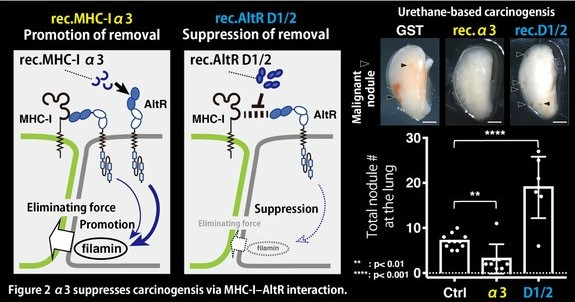
Thus, it was shown that epithelial cells, which are non-immune cells, have an immune cell-like surveillance system in which they recognize the MHC-I of precancerous cells via AltR. It is now clear that the elimination of precancerous cells by epithelial cells based on this surveillance system is the mechanism of suppression of carcinogenesis.”
(3) Future Prospects
The rec. MHC-I α3 protein that was obtained based on the mechanism elucidated in this study has been found to inhibit carcinogenesis in mice. It is expected to lead to the development of innovative medicine for the preventive treatment of cancer.
It is hoped that it will be possible to establish preventive cancer treatments based on the findings of this research, but precancerous cells are very difficult to detect. Therefore, the development of technology for detecting precancerous cells is a future challenge, and the development of such detection technology will lead to the active use of therapeutic agents based on rec. MHC-I α3 and others.
For infectious diseases such as bacteria and viruses, the common strategy is to prevent infection with vaccines and to treat infected people with drugs. In the case of cancer, cancer treatment after the onset of the disease is common, but the concept of cancer prevention has not been widely accepted in society. Through this research, though, we hope that society will pay more attention to cancer-preventive treatment and work to realize a cancer-free society.
(4) Glossary
1 MHC-I
MHC-I (Major Histocompatibility Complex class I) is a cell membrane protein that presents intracellular proteins as antigens to the outside of the cell. It generally acts as a ligand (a substance that binds specifically to a particular receptor) which sends signals to immune cells by expressing on the surface of various cells. In cells with abnormalities, MHC-I is actively expressed; that serves as a signal to immune cells that the cell is abnormal.
2Ligand (MHC-I) − Receptor (AltR)
Ligand−receptor interaction is a type of protein-protein interaction. When a ligand binds to a protein (receptor) that accepts the ligand, it often enables a specific function or intracellular signal in the cell that expresses the receptor. AltR (suboptimal alteration recognizing protein) is a protein (plasma membrane protein receptor) with an Ig-like domain that can interact with MHC-I, but its function has not yet been elucidated. In this study, we found that epithelial cells upregulated the expression of this receptor (AltR) upon contact with precancerous cells and accepted the signal of MHC-I, a membrane protein ligand. Furthermore, these results revealed that AltRs that recognize and accept MHC-I signals have the property of promoting normal cells’ ability to attack.
3RasV12 protein
Glycine (G) in the 12th position of the proto-oncogene Ras is mutated to valine (V), resulting in the oncogene RASV12. The protein encoded by this oncogene RASV12 is RasV12. The oncogene protein RasV12 is a homeostatically active form of the protein Ras; in epithelial cells, RasV12 promotes cell polarity disruption and cell proliferation, leading to the development of cancerous cells.
4In vitro cell competition model
A system in which the phenomenon of cell competition is reconstructed in vitro (on a culture dish) by co-culturing normal cultured cells (canine kidney epithelial cells, MDCK cells and human skin epithelial cells, HaCaT cells) with precancerous cells with expression of RasV12. By mixing normal cells and precancerous cells to form a monolayer and then inducing the expression of RasV12 in the precancerous cells, the system mimics the stage when precancerous cells arise in the epithelial cell layer. The precancerous cells in that layer are pushed out by normal cells and eventually eliminated on the apical side of the epithelial cell layer.
5Recombinant (rec. MHC-I α3 or rec. AltR D1/2)
The α3 domain recombinant, which is the extracellular domain of MHC-I, the site of interaction with AltR in normal cells, was artificially purified as recombinant protein rec. MHC-I α3; the D1/2 domain of AltR, which binds to the alpha domain, was artificially purified as rec. AltR D1/2.
MHC-I α3 interacts with the AltR of normal cells and promotes the attack function of normal cells. On the other hand, rec. AltR D1/2 competitively inhibits the interaction between MHC-I and AltR, thereby preventing the induction of the attack function of normal cells.
6 Malignant nodule
A malignant nodule is a lesion in the lung with an increased concentration of cells resulting from abnormal cell proliferation. Malignant nodules, which are pre-cancerous lesions, are observed in the early stages of carcinogenesis. In an in vivo mouse model using urethane, cells in malignant nodules showed oncogenic mutations in the proto-oncogene Ras.
7 In vivo mouse model
This is an experimental system in which mice are subjected to tumor formation and carcinogenesis, allowing observation of the process of tumor formation and analysis of its involvement in carcinogenesis. In terms of tumorigenesis, by subcutaneously transplanting a mixture of normal HaCaT cells and precancerous cells into mice, we were able to observe the process of subcutaneous tumorigenesis. As for carcinogenesis, administration of urethane to mice induces oncogenic mutations in the proto-oncogene Ras in the lungs, leading to carcinogenesis. In the early stage of carcinogenesis, malignant nodules are formed in the lungs.
(5) Publication information
Journal title: Nature Immunology
Title of paper: Epithelial cells remove precancerous cells by cell competition via class I MHC-LILRB3 interaction
Authors (Corresponding authors*) Shiyu Ayukawa1, Nagisa Kamoshita2†, Jun Nakayama1†, Ryuhei Teramoto1, Novalia Pishesha3, Kenji Ohba4, Nanami Sato5, Kei Kozawa5, Hikari Abe1, Kentaro Semba1, Nobuhito Goda1, Yasuyuki Fujita5,6, Takeshi Maruyama2*
1 Department of Life Science and Medical Bioscience, School of Advanced Science and Engineering, Waseda University
2 Waseda Institute for Advanced Study, Waseda University
3 Faculty of Arts and Sciences, Harvard University,
4 Division of Genetic Therapeutics, Center for Molecular Medicine, Jichi Medical University
5 Division of Molecular Oncology, Institute for Genetic Medicine, Hokkaido University Graduate School of Chemical Sciences and Engineering
6 Department of Molecular Oncology, Kyoto University Graduate School of Medicine, Kyoto,
These authors are equally contributed.
(6) Funding support
- Title of Research Grant: AMED prime
Title of Research Project: Removal repair of pre-cancerous cells by spatiotemporally sensing suboptimal cells
Principal investigator: Takeshi Maruyama (Waseda University)
- Title of Research Grant: JST PRESTO
Title of Research Project: Opt-CRISPRed mouse system for understanding the behavior of transformed cells
Principal investigator (Institution): Takeshi Maruyama (Waseda University)
3. Research activities of Assistant Professor Tomohiro Fujita
In the fall of 2021, a seminar series on cosmology was launched with the aim of providing a forum for discussion of cutting-edge research in the field. Assistant Professor Tomohiro Fujita, the organizer of the seminar, reports here on the purpose of the seminar and the contents of the lectures that have been provided so far.
The WIAS-sponsored seminar series Frontiers of Cosmology Research – Tokyo New Faces in Cosmology, began in September 2021. While the effects of COVID-19 have hampered the exchange of information and joint research among researchers, researchers who have been active at the forefront of research overseas have been returning to Japan one after another. This seminar series invites returnee researchers affiliated with research institutes in the Tokyo area to Waseda University to give seminars in an on-line / on-site hybrid format. The purpose of this seminar series is to offer seminar lectures on the latest research to researchers and students in Japan through online delivery, while at the same time providing an opportunity to stimulate new research through face-to-face discussions at the venue. So far, we have held one seminar each month, on September 22, October 22, November 25 and December 21, 2021. The following is a summary of the first four lectures.
In the first lecture, Dr. Ryo Namba, a senior research scientist at RIKEN, gave a lecture entitled, Reduction to Low-Energy Effective Theories in Cosmology and the Conditions for Consistency with UV Theories. In some cosmological hypotheses, a dynamical singularity called a caustic appears. Near that singularity, effective theory breaks down, so it is expected that theories involving caustics will be rejected or replaced by more precise theory at high energies. Caustic is not a particularly new concept, but it has not been studied much in Japan; in fact, there is no authorized translation of the term into Japanese. In the latter half of his lecture, Dr. Namba mentioned on the relationship between caustic and the latest theoretical developments such as positivity bound. It was a very meaningful seminar, with several discussions leading to new research directions, such as how caustic can be viewed in the context of particle theory. At the time of that first seminar, we were still under a state of emergency for COVID-19 and could not accept participants at the venue. Nevertheless, the online participants spoke actively and engaged in lively discussions in the Zoom environment, and we got the sense that there was a broad need for such seminars.
The second lecture, Primordial Black Hole Cosmology, was given by Dr. Misao Sasaki, Professor at the University of Tokyo’s Kavli Institute for the Physics and Mathematics of the Universe (IPMU). Primordial black holes are black holes that formed in the early universe; some of them may be as extremely light as one kilogram. In recent years, they have attracted a great deal of attention as candidates for dark matter or as the origin of binary black holes that have been observed via gravitational waves. Dr. Sasaki introduced the research finding that the LISA space gravitational wave telescope can almost certainly capture the gravitational waves emitted by the formation of primordial black holes (assuming that primordial black holes account for all of dark matter). About 100 people, including some prominent researchers, participated in the online session, an indication of the high level of interest in this topic. Since the state of emergency had been lifted at the time of this second seminar, participants were accepted at the venue, though in limited numbers. A variety of participants, from fourth-year undergraduates studying cosmology at Waseda University to experts from Nagoya University, came to the venue and a lively Q&A session developed.
In the third lecture, Dr. Kyohei Mukaida, Assistant Professor at the High Energy Accelerator Research Organization, gave a talk on Chiral Quantum Anomalies and Inflation. Despite the fact that matter and antimatter are symmetric in particle physics, the universe we live in is almost exclusively filled with matter. Chiral quantum anomalies have been attracting attention as possibly the origin of that asymmetry. If an axion-like inflation breaks CP (Charge + Parity) symmetry and is coupled to matter, baryon number production is expected to occur through quantum anomaly. However, Dr. Mukaida explained that we do not fully understand the process by which both the gauge field and charged particles are generated to satisfy the equations of the chiral quantum anomaly, and that insight into the mechanism is essential to the ultimate understanding of the full scenario. Strong gravitational waves are expected to be emitted during the above process, so it’s likely that it will be possible to predict in detail the behavior of gravitational waves in the future.
In the 4th lecture, Dr. Naritaka Oshita, a Special Postdoctoral Researcher in the RIKEN Interdisciplinary Theoretical and Mathematical Sciences Program, gave a talk on Chords of Black Hole Oscillations and their Importance. In recent years, the observation of gravitational waves emitted from black hole binary merging events has advanced, and quasi-normal mode, which is the deformation mode of black holes after merging, has attracted much attention. Dr. Oshita has been studying the higher harmonic components of quasi-normal mode. Dr. Ohshita explained how to theoretically calculate the ease of deformation of black holes and how to combine those methods with numerical simulations to explore the physics of black holes. In the future, as the accuracy of gravitational wave observation increases, we may be able to study the structure of black holes in detail using information about higher-order modes. Black holes are a classic problem that has been studied for a long time, but this seminar gave us a sense that there is still a lot of room for growth in this research field.
As mentioned above, we have had lectures on a variety of topics in related fields of cosmology, offering an opportunity for both online and on-site participants to mix and actively exchange ideas. We hope to promote cosmology research in the Tokyo area and throughout Japan by continuing this seminar series in the future.

4. Introduction of new research project “Humanities in the Anthropocene”
WIAS’s new research project, “Humanities in the Anthropocene,” began in October 2021. The Anthropocene, a proposed geological epoch that includes the present day, was proposed by atmospheric chemist and Nobel chemistry laureate Paul Crutzen in February 2000 at a meeting of the International Geosphere-Biosphere Programme scientific committee. The project raises the notion that the Holocene period, which began about 11,700 years ago, has come to an end due to human impact on the global environment and we are already living in the Anthropocene. That notion has been prompting discussions that extend beyond the natural sciences to the social sciences and the humanities.
The project is a cross-disciplinary research organization led by Professor Satomi Yamamoto, WIAS Associate Director, with participants including young researchers from WIAS, Nagoya University, and Harvard University, coming from a wide range of specialized fields, including art history; literature; philosophy; aesthetics; music; architecture; archaeology; cognitive neurology; environmental economics; and environmental agriculture. The primary objective of the project is to share explorations of the notion of the Anthropocene through the activities of the project; to discuss the scope of the Anthropocene; and to develop a forum for joint research that integrates the expertise of the various fields. In addition, we aim to establish a method of connecting, utilizing and disseminating classical knowledge of “human activities” that has been accumulated in the humanities, and applying it to the addressing of present and future societal issues.
As a kick-off event for the project, the first public seminar was held on Saturday, December 4, 2021. Prof. Yamamoto opened the event with an explanation of the aims of the project, followed by a speech by Professor Yukio Lippitt of Harvard University, a member of the project, about research trends in the U.S. and future possibilities related to the Anthropocene, ecocriticism, and environmental art history. Associate Professor Takeo Onishi of Gifu University’s Faculty of Applied Biological Sciences gave a lecture entitled, History of the Earth: A Circular System of Water, Soil and Human Beings. In his lecture, Dr. Onishi introduced recent Anthropocene related research trends from the perspective that environmental changes based on the dynamism of the circulation of water, soil, and people occurred long before the Industrial Revolution in the 18th century, generally regarded as the beginning of the Anthropocene. He raised the issue that human beings have finally begun to understand that the earth system is very complex, but that, ironically, the modern social system created by human beings has not been able to imitate the earth system, which may be a main reason for global warming and other problems. The lecture was very accessible and stimulating since it was designed to explain complex science and nonlinear dynamics by taking up familiar events. In the discussion with the participants, there was a lively exchange of opinions on a variety of topics, including the lifestyle of the Jomon people; the necessity of simulations that take into account human behavior; the trend toward historical reinterpretation research that combines scientific findings with documentary sources; and the state of conventional research that views history as linear.
This research project will continue to hold public seminars and workshops on the Anthropocene, while promoting the formation of a forum for collaboration among researchers in various fields of expertise.
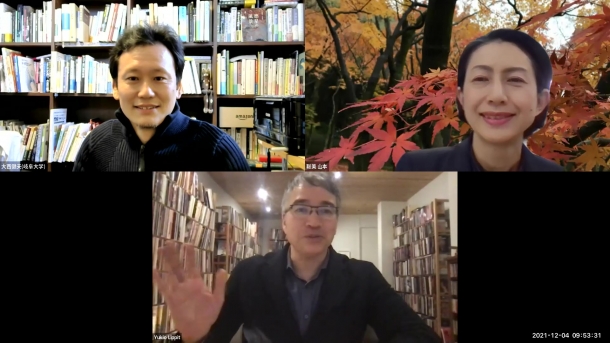
We welcome your comments and suggestions. Please contact us at the coordinates below.
Waseda Institute for Advanced Study (WIAS)
1st floor, Nishi-Waseda Bldg.
1-21-1 Nishi Waseda, Shinjuku-ku, Tokyo 169-0051, JAPAN
URL:https://www.waseda.jp/inst/wias/en/
TEL:03-5286-2460
FAX:03-5286-2470
E-mail:[email protected]

